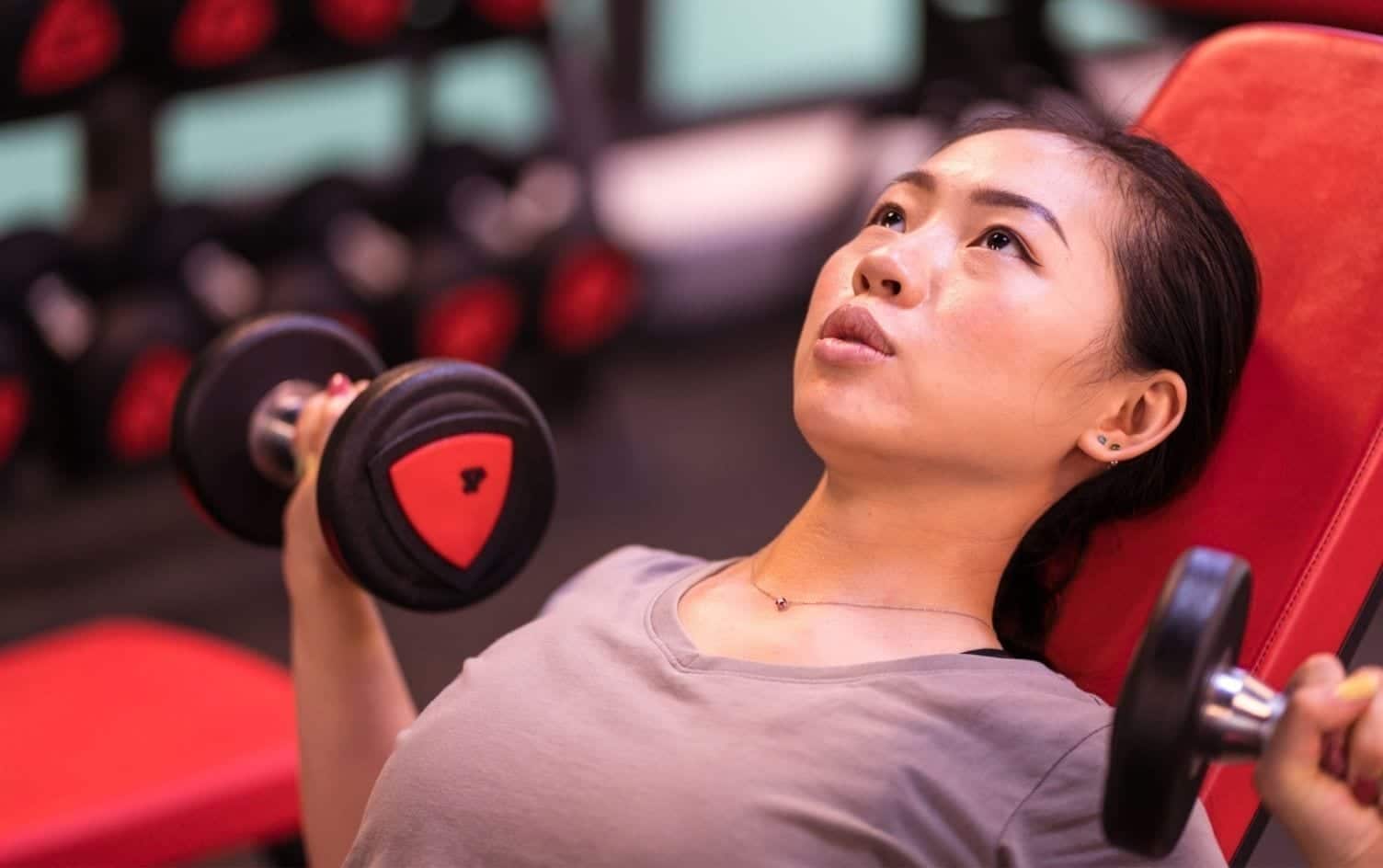As popular as the bench press and pushup are, there is actual value to this foundational movement over the aesthetic benefits (visible muscles) you get from them. Pushing is essential for getting up off of the floor, placing a suitcase in the overhead compartment and even holding a child.
Everyone (yes, everyone) should include push movements in their exercise routine, even if that means modifying the standard exercises to make them more accessible. Even the most basic push movements are extremely beneficial to our everyday lives.
Here are three things to think about while doing any sort of push movement during a workout:
- Plank. Many times, while doing pressing movements, people focus on the flexion and extension of the arms and shoulders but forget about the rest of the body. While performing any push, remember to keep your shoulders, hips and knees in alignment. Avoid shrugging the shoulders, sagging the hips or flaring the ribs. Think about your plank before you start the push.
- Juice the Oranges. To avoid “winging” the shoulder blades and an unstable shoulder joint that could lead to injury, work on pulling your shoulders down and back before and during the push movements. You can imagine an orange in each of your armpits. As you move, pretend to “juice” those oranges by keeping your arms close to your sides to protect your shoulder joints.
- Arrow Arms. For the safety of the shoulder capsule, consider doing your forward pressing movements (pushup, bench press, TRX chest press) with the arms in an “arrow” position versus a “T” position, which can cause impingement in the shoulder joint. Bonus: The arrow position also helps you move more force with greater power (aka easier pushups!).
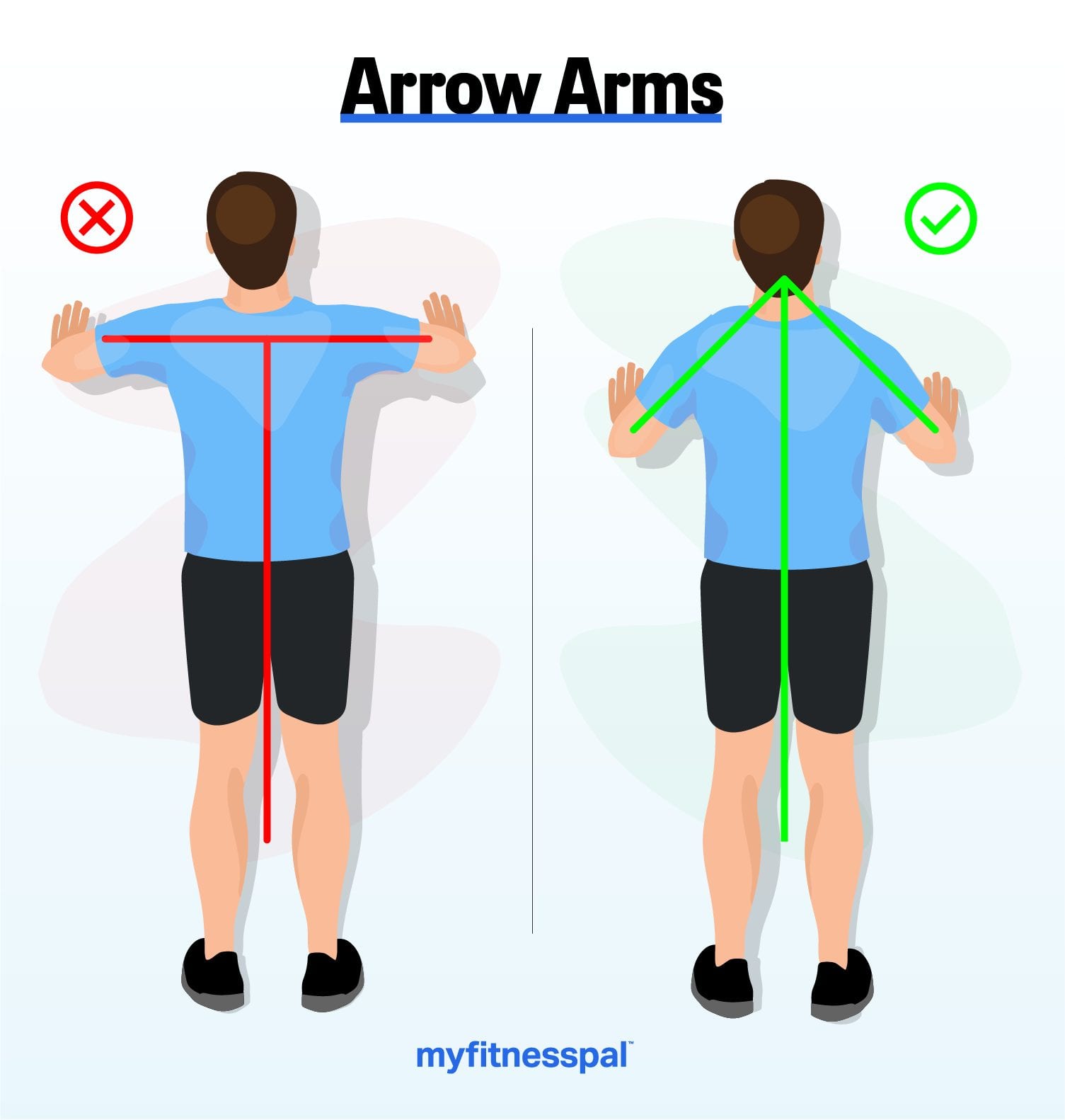
THE WORKOUT
The below workout can be incorporated into your regular exercise routine 1–2 times per week. Perform 2 sets of 10 reps of each exercise, with a 30–60 second rest between sets.
TRX CHEST PRESS
The TRX chest press is a great move to begin with as it’s easily modifiable. Additionally, the instability of the straps helps engage the core and connects the brain to the muscles involved.
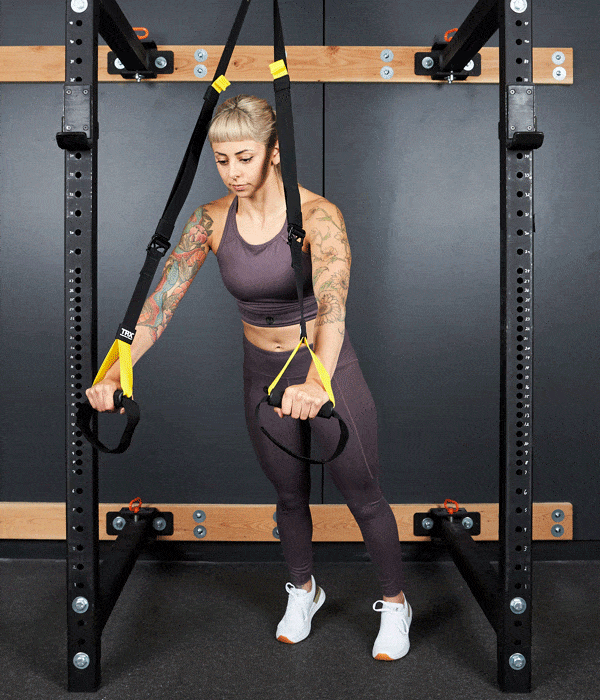
The Move: Begin with the straps fully lengthened, and stand facing away from the anchor point. Hold the handles directly beneath your shoulders without letting the straps rub on your arms. While maintaining a strong and straight plank, slowly bend your arms at 45-degree angles to your body and lower your body so your chest stops about 1-inch above your hands. Press into the handles to come back up to the starting position. To increase the intensity, step your feet closer to the anchor point so your body is more horizontal. To make the move easier, step away from the anchor point so your body is more vertical.
NEGATIVE PUSHUP
The negative pushup is another great prep move to enforce perfect pushing form and a strong stable plank. This can be used as a stepping stone toward a full pushup, or simply an exercise to emphasize the eccentric contraction of a pushup.
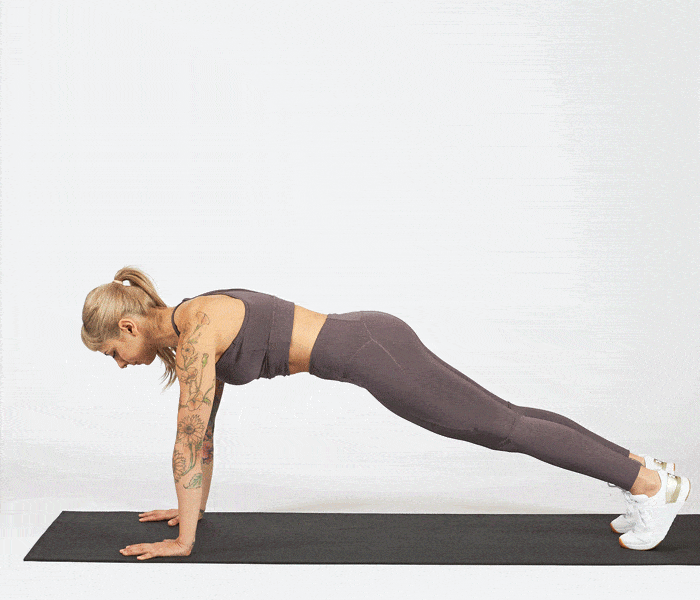
The Move: Begin in a strong plank position, with your hands positioned directly beneath your shoulders. While maintaining full-body tension, slowly bend your arms and lower yourself to the floor. Place your knees down and reset to the starting position.
EXPLOSIVE PUSHUP
Taking what was learned and practiced from the previous two exercises, we will now add speed and power to the pushup. This plyometric movement aids explosiveness, strength and stability of the core and shoulders.
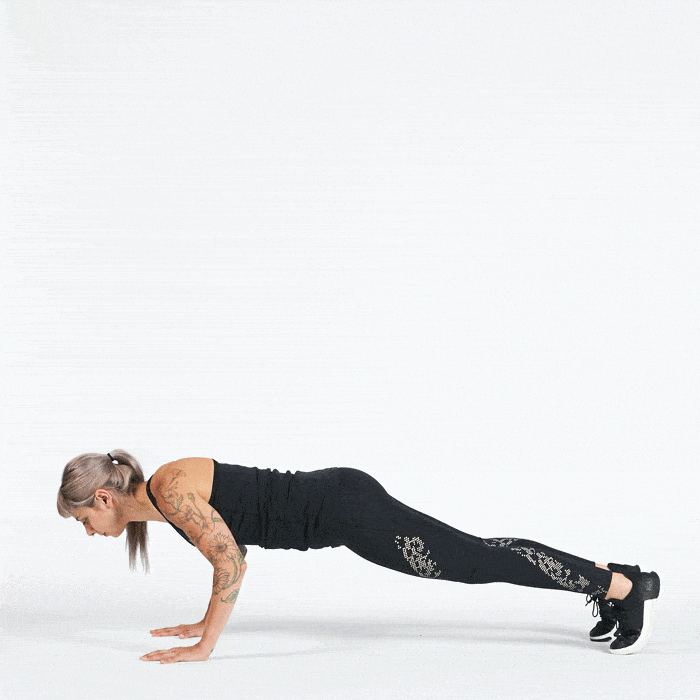
The Move: Begin in a strong plank position, with hands positioned directly beneath your shoulders. Bend your arms and lower your body a few inches off of the floor. Explosively press into the floor so your hands lose contact with the floor for a moment at the top of the movement. Absorb the landing with a straight, braced core, with softness in your elbows and shoulders. To decrease the intensity of this movement, perform it from the knees or simply as a fast pushup without leaving the ground.
DUMBBELL BENCH PRESS
After the movement prep and plyometric pushing movements, it’s time to add a larger load. Using dumbbells instead of barbells or machines aids in developing stability at the shoulder joint and allows better freedom of movement (including the arrow versus T arm position mentioned above).

The Move: Grab two dumbbells and safely lay on a bench or the ground. Hold the dumbbells with bent arms at chest-level with your palms facing toward your feet. Your arms should be angled at 45-degrees from your body. Press both dumbbells up so your arms are straight, but elbows are not locked. Then, slowly lower the dumbbells with control, stopping with the bells about an inch above your chest. Ensure your core stays braced, wrists are neutral and the dumbbells go straight up (not at an angle or in a curve).
SINGLE-ARM DUMBBELL OVERHEAD PRESS
Pressing overhead (safely!) is very functional to movements we do in everyday life. By focusing on one side at a time, the core is more engaged and you can correct any strength imbalances.
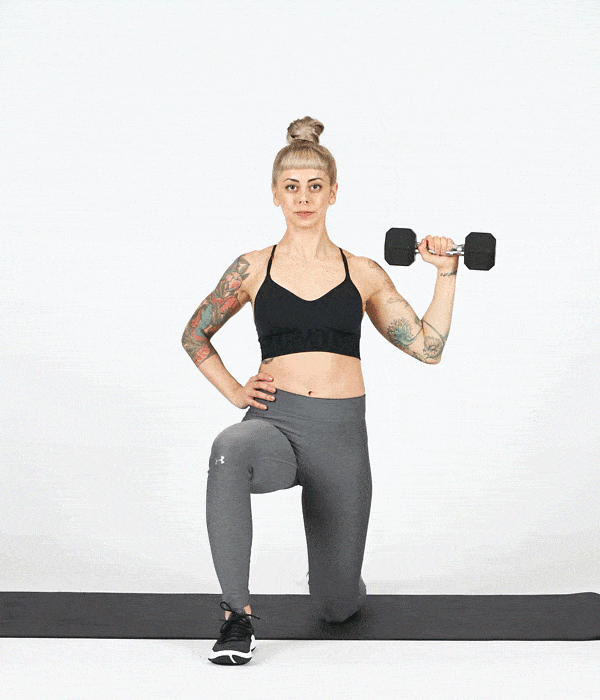
The Move: With a strong, stable stance, hold a moderate-weight dumbbell in one hand at ear height. While avoiding twisting, arching and shoulder shrugging, press the dumbbell straight up overhead. Slowly lower the dumbbell back to the start. Perform the reps with the other arm.
DUMBBELL THRUSTERS
This exercise takes what was learned from the previous exercises and incorporates a full-body movement, increasing functionality of the push and exhausting your muscles at the end of your workout.

The Move: Begin with moderate-weight dumbbells positioned by your ears. Drop your hips down and back into a squat, as low as you can safely go. Explosively press through the floor to stand up and drive your arms straight up overhead. Lower the dumbbells in a controlled manner to the starting position.
For more fitness inspiration, check out “Workout Routines” in the app to discover and log a wide variety of routines by performance specialists. Or build your own routine with exercises that fit your goals.
